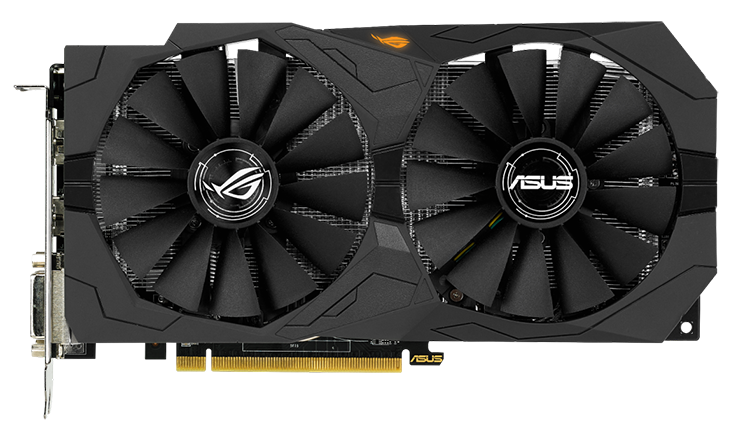Introduction

The AMD Radeon RX 480 came into town in late June laden with the promise of an excellent bang for buck. It's taken a while for partners to get hold of the Polaris 10 GPU, though the stock situation is now becoming slightly better. Our pick of the initial RX 480 bunch is the £200 Sapphire Nitro 4GB. It's a card that offers a solid experience at a 1440p resolution in the latest games.
AMD made no secret that it planned to distill the Polaris architecture down to even more agreeable price points. The first prong of this strategy is to release the RX 470 at a lower price point for those that can't quite justify the $200 price tag of its bigger brother.
RX 470 is built from the same Polaris 10 die as the RX 480. Market differentiation means that parts of the silicon are massaged at the factory with the aim of creating a wide-enough performance delta. Here is how the Radeon RX 470 stacks up.
AMD Radeon line-up |
|||||
|---|---|---|---|---|---|
Radeon R9 Fury X |
Radeon R9 390X |
Radeon RX 480 |
Radeon R9 380X |
Radeon RX 470 |
|
| Launch Date | June 2015 |
June 2015 |
June 2016 |
November 2015 |
August 2016 |
| Codename | Fiji XT |
Grenada XT |
Polaris 10 XT |
Antigua XT |
Polaris 10 Pro |
| Architecture | GCN 3rd |
GCN 2nd |
GCN 4th |
GCN 3rd |
GCN 4th |
| Process (nm) | 28 |
28 |
14 |
28 |
14 |
| Transistors (mn) | 8,900 |
6,200 |
5,700 |
5,000 |
5,700 |
| Approx Die Size (mm²) | 596 |
438 |
232 |
359 |
232 |
| Full Implementation of Die | Yes |
Yes |
Yes |
Yes |
No |
| Processors | 4,096 |
2,816 |
2,304 |
2,048 |
2,048 |
| Texture Units | 256 |
176 |
144 |
128 |
128 |
| ROP Units | 64 |
64 |
32 |
32 |
32 |
| Peak GPU Clock (MHz) | 1,050 |
1,050 |
1,266 |
970 |
1,206 |
| Peak GFLOPS (SP) | 8,602 |
5,914 |
5,834 |
3,973 |
4,940 |
| Memory Type | HBM |
GDDR5 |
GDDR5 |
GDDR5 |
GDDR5 |
| Memory Size (MB) | 4,096 |
8,192 |
4,096 / 8,192 |
4,096 |
4,096 |
| Memory Bus (Bits) | 4,096 |
512 |
256 |
256 |
256 |
| Memory Clock (MHz) | 1,000 |
6,000 |
7,000 / 8,000 |
5,700 |
6,600 |
| Memory Bandwidth (GB/s) | 512 |
384 |
224 / 256 |
182 |
211 |
| Power Connectors | 8+8 |
8+6 |
6 |
6+6 |
6 |
| TDP (Watts) | 275 |
275 |
150 |
190 |
120 |
| GFLOPS per Watt | 31.3 |
21.5 |
38.89 |
20.9 |
41.17 |
| Launch MSRP | $649 |
$429 |
$199+ |
$229 |
$179+ |
Specification analysis
RX 470 loses four of the RX 480's 36 CUs. The 32-CU part looks, on paper at least, eerily similar to the specifications of the Radeon HD 7970 at the top end, albeit now interfacing with 256-bit memory instead of 384 bits.
A lower peak core speed and shader-count reduces available throughput by around 20 per cent. AMD chooses to also hamstring this part with slower memory - 6,600MHz vs. 7/8,000MHz on RX 480 - so there's balance in the design.
Architecturally, though, this second-rung Polaris shares all the goodness available in the main chip, so there's the latest GCN blueprint, improved geometry, shader and memory-compression efficiency, and a number of upgrades to the display.
A reduction in the amount of power flowing through the board enables a reference card to drop juice from 150W to 120W, matching the GeForce GTX 1060. We expect partner boards to increase the frequencies, and therefore power, back to RX 480 levels.
Sensible expectations are that RX 470, on a clock-for-clock core basis, will be 10-15 per cent slower than the equivalent RX 480, due to the snips and chops discussed above.
The RX 470 is to be sold in 4GB varieties first alone, with 8GB cards coming at a later date. Part of that reason has to do with pricing. RX 470 is only $20 (£20) cheaper than RX 480, so there will be inevitable overlap between premium RX 470s and basic partner RX 480s. This statement has profound repercussions for various add-in board partners' offerings.









